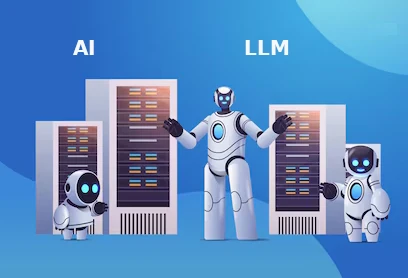Anaconda and AI Software Development |
Anaconda and AI Software DevelopmentLearn how to use the anaconda IDE and tools to create software with AI for advanced technology services and applications. 
|
Anaconda use in software developmentAnaconda is a powerful partnership and tools for AI software development. Anaconda, a widely used distribution for Python and R, provides an integrated environment for AI and data science applications. From machine learning to deep learning, Anaconda simplifies package management, enhances scalability, and accelerates AI software development. Artificial Intelligence (AI) software development requires robust tools and frameworks like anaconda for managing dependencies, optimizing performance, and ensuring smooth workflows. Check the Anaconda website for official information about this great AI tool/ |
What is Anaconda?Anaconda is an open-source distribution designed for data science, AI, and machine learning. It simplifies package management, version control, and environment creation, making it an essential tool for AI developers. Anaconda comes with Conda, a package manager that streamline s dependency handling and ensures compatibility across different libraries and frameworks. Key Components of Anaconda Conda – A powerful package manager for installing and managing dependencies. Jupyter Notebook – An interactive development environment for writing and testing AI models. Spyder – A Python IDE optimized for scientific computing. Integrated Machine Learning & Deep Learning Libraries – Supports TensorFlow, PyTorch, Scikit-learn, and Keras. Data Visualization Tools – Includes Matplotlib, Seaborn, and Pandas for AI-driven analytics. Parallel Computing Support – Facilitates high-performance computing for large-scale AI applications. |
Use Anaconda for AI Software DevelopmentHow Anaconda Enhances AI Software Development Simplified Dependency Management : AI models often require multiple libraries and dependencies that must be compatible. Conda manages dependencies efficiently, preventing conflicts and reducing setup time. Optimized GPU Support : Anaconda seamlessly integrates with CUDA, ensuring optimal performance for AI models running on GPUs. This is crucial for deep learning applications that rely on TensorFlow and PyTorch. Streamlined AI Model Development : With Jupyter Notebook, AI developers can write, test, and visualize AI models in real time. This interactive environment facilitates debugging and experimentation. Scalable Deployment : Anaconda allows developers to package AI applications for deployment in cloud environments, edge computing, and enterprise systems. Secure and Reproducible AI Pipelines : Using virtual environments, AI teams can create isolated setups to ensure consistent results across different machines and projects. |
AI Libraries Available in AnacondaAnaconda includes the most popular AI libraries Anaconda simplifies installation and management of major AI frameworks, including: TensorFlow – Deep learning framework by Google. PyTorch – AI research-focused deep learning library. Scikit-learn – Machine learning algorithms for classification, regression, and clustering. Keras – High-level neural network API running on TensorFlow. XGBoost – Optimized gradient boosting framework for AI. OpenCV – Computer vision library for AI-powered image processing. |
How to Install AnacondaAs AI development grows, Anaconda will continue to evolve, supporting more advanced AI workflows, improving cloud deployment capabilities, and enhancing GPU acceleration. Automated AI pipelines, low-code AI development, and cloud-native AI environments will further integrate with Anaconda, ensuring efficiency in large-scale AI projects. Installation Steps : Download Anaconda – Visit the official Anaconda website and download the installer for your operating system (Windows, macOS, or Linux). Run the Installer – Open the downloaded file and follow the installation prompts. Choose Installation Type – Select whether to install Anaconda for a single user or system-wide. Set Up Environment Variables – Ensure Anaconda is added to your system’s PATH for easy access. Verify Installation – Open a terminal or command prompt and run conda --version to confirm Anaconda is installed. Launch Anaconda Navigator – Use the graphical interface to manage packages, environments, and tools. |
Anaconda Hardware RequirementsReview the Hardware Requirements for installing Anaconda Operating System: Windows 10 or later, macOS 10.15+ (Intel) or macOS 11.1+ (Apple Silicon), or Linux (Ubuntu, RedHat, CentOS 7+). Processor: 64-bit architecture (x86 or ARM64). RAM: Minimum 4 GB, recommended 8 GB or more for AI applications. Storage: At least 5 GB of free disk space for installation. Graphics: GPU support depends on CUDA compatibility for deep learning tasks. For more details, check the official system requirements. You can find more guidance on setting up Anaconda for AI development. |
Challenges of Using Anaconda in AI DevelopmentWhile Anaconda offers significant advantages, it comes with challenges: - Large Installation Size – The full distribution can be resource-intensive. - Learning Curve – New users may need time to understand Conda environments and package management. - Dependency Conflicts – Some AI libraries may require manual adjustments despite Conda’s automatic handling. |
The Future of AI Software Development with AnacondaAs AI development grows, Anaconda will continue to evolve, supporting more advanced AI workflows, improving cloud deployment capabilities, and enhancing GPU acceleration. Automated AI pipelines, low-code AI development, and cloud-native AI environments will further integrate with Anaconda, ensuring efficiency in large-scale AI projects. |
| Anaconda has become one of the most essential platforms for AI software development, offering streamlined package management, environment control, and powerful AI tools. Its integration with deep learning frameworks, security features, and scalability makes it a must-have for AI developers working on machine learning, automation, and data-driven applications.
Would you like to setting up Anaconda for your AI projects? |